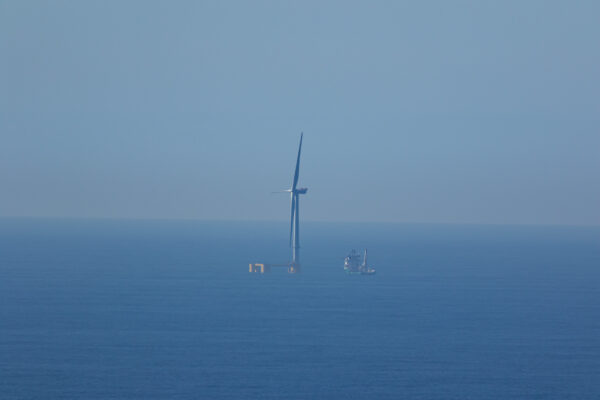Scotland has long been a heavyweight in offshore wind, with abundant wind resources and a highly skilled workforce. More than 10 GW of offshore wind capacity is currently in development, supporting national targets of 11 GW by 2030 and over 40 GW by 2035. This momentum is part of Scotland’s wider commitment to reach net zero by 2045, with floating wind set to play a central role.
Fixed-bottom turbines are limited to relatively shallow waters, which previously restricted where offshore wind could be built. Floating wind removes that constraint, allowing development in much deeper areas, and Scotland is now moving quickly to capitalise on that advantage.
How Scotland took the lead
Scotland was first to take floating wind commercial. Hywind Scotland began generating power in 2017, proving the technology’s viability in harsh offshore conditions. Kincardine followed and, at 48 MW, remains the world’s largest operational floating wind farm.
Now, much larger projects are in development. Pentland, Salamander, and Green Volt — expected to reach 560 MW — aim to position Scotland at the forefront of floating wind at industrial scale.
This progress is not just about natural resources. Decades of oil and gas activity have built a strong base in subsea engineering, marine operations, and mooring design. These skills are directly transferable, allowing Scottish firms to pivot into renewables and build a stronger domestic supply chain.
Policy, ports, and industrial momentum
The shift to floating wind is being reinforced by supportive policy and investment. The ScotWind leasing round prioritised projects in deeper waters and required strong commitments to local supply chain value. This is now driving activity across construction, manufacturing, port logistics, and vessel support, with infrastructure hubs from Aberdeen to the Highlands seeing renewed growth.
According to ScotWind commitments, each project could bring over £1.5 billion into the domestic supply chain. By 2030, the offshore wind sector could support up to 22 000 direct jobs across Scotland.
From pipeline to national impact
Today, offshore wind already supports more than 10 000 full-time equivalent jobs in Scotland. Floating wind is expected to accelerate that growth, particularly in rural and coastal regions. Planned developments could generate around 17 800 construction roles and nearly 1 900 long-term positions, covering everything from infrastructure and vessel operations to engineering and maintenance.
Capital investment is scaling up, with sector-wide spend projected to reach between £29 billion and £40 billion in the coming decades, with existing operations already contributing £15.5 billion in gross economic output. If the current pipeline is realised, the total capital value could approach £100 billion, generating up to £35 billion in public value.
Scotland’s next chapter is already afloat
Scotland’s leadership in floating wind is not the result of chance. It reflects the alignment of geography, industrial expertise, early innovation, and consistent political ambition. For the global offshore sector, Scotland offers more than a case study. It provides a working blueprint for how to scale floating wind: not just in deeper waters, but as part of a broader energy transition.



